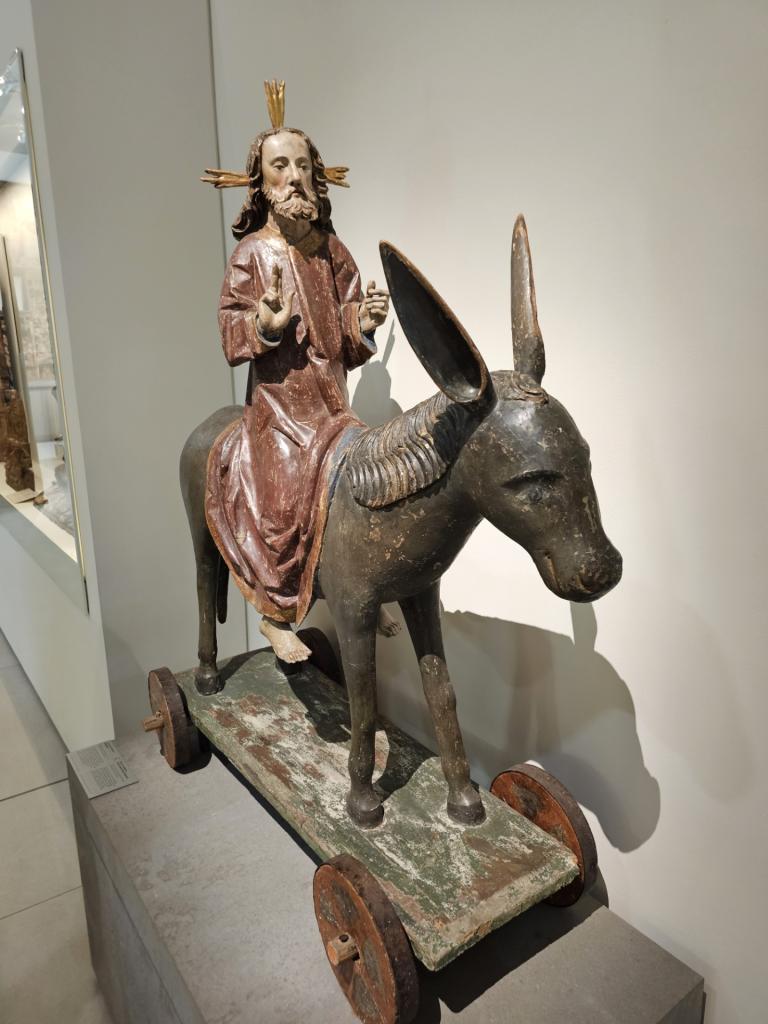“Anglican? Is that like Episcopalian? What’s the difference?”
I get questions like these a lot and often for a good reason. On one level, there is a general confusion as to what these words mean in their historical and grammatical sense. On another level, there is confusion surrounding how the meanings of these words have changed and taken on new semantic hues over time, especially since the beginning of the millennium.
Historical meanings of Episcopal and Anglican
Episcopal
It may be easiest to begin with the origins of the word “episcopal”—a word which may already be familiar to those who have engaged with the New Testament in its original language. It is an adjective which comes from the Greek word ἐπίσκοπος (episkopos). This word appears most frequently in our English translations as “overseer” (e.g., Acts 20:28; Phil 1:1; 1 Tim 3:2). It is here that Christian traditions which have bishops (viz. Catholics, Orthodox, and Anglicans) find the biblical basis for the office of “bishop” as as something distinct from the office of “elder” (πρεσβύτερος; e.g., Acts 11:30, 14:23, 15:2; 1 Tim 5:17; Titus 1:5, Jas 5:14), and “deacon” (e.g., Phil 1:1; 1 Tim 3:8, 4:6; see also possibly Acts 6:1–6).
Episcopal, in the technical sense, names a mode of ecclesial polity, of church structure and governance. So we may talk about this or that denomination having an “episcopal model” of polity versus a congregationalist or presbyterian one. Put simply, it means that the denomination has bishops.
Anglican
“Anglican” in its origin also means something quite simple: It means “coming from Anglia [England].” Christianity came to the British Isles during the first few centuries after Christ’s Ascension. Just as we might trace the developments of Slavic Christianity or Iberian Christianity with all of the unique developments that came to fruition after the arrival of the gospel in those lands, so also for a long time to speak of the Ecclesia Anglicana was to speak of what was happening in Christianity in the British Isles.
Over time, however, the distinct shape that Christian belief and practice took on in the British Isles brought it increasingly into conflict with the growing efforts to create and consolidate a universal patriarchate (i.e., a papacy) in Rome. These tensions came to a head during the theological reforms which swept across Europe in the sixteenth century.
At this time, for a number of complicated reasons (and no, not all of them had to do with Henry VIII’s marriages, though those were contributing and complicating factors, to be sure), the church in England separated from the papacy in Rome—not so much to start a new church (even Henry VIII in his craziest moments would reject the idea that he “founded” the Church of England in the proper sense) as to continue the growth of the church in England without the curtailments and jurisdiction of Rome.
The meaning of “Anglican,” therefore, changed significantly during this time from “the church (under Rome) in England” to “the church of England” without reference to Rome.
Importantly, the Anglican framers (those who led the establishment of the Church of England during this period) kept the episcopal model of church government, unlike many of the continental Reformers. The Church of England has bishops. Anglicans, in this sense, are episcopal, in the sense that bovines are mammals.
The meanings of Anglican and Episcopal following the American Revolutionary War
The problem of American independence
An important shift in the terms “Anglican” and “Episcopal” occurs after the Revolutionary War.
You can easily imagine how being a member of the Church of England might be awkward and problematic for, say, a Bostonian in the years following 1776. This is not a hypothetical situation. There were a number of Anglicans in the newly independent colonies—there are even Anglican signatures on the Declaration of Independence.
The Anglican Church in the fledgling United States needed its own bishops. But there was a problem: English bishops needed to recognize the authority of the King of England, something citizens of the United States could not do.
The Scottish Episcopal Church, however, offered a solution. Though Scotland was united with England (hence, “the United Kingdom”), their bishops did not need to take the oaths of fealty required of English bishops. So Anglican bishops from Scotland consecrated Samuel Seabury, an American, as an Anglican bishop in 1784. The first Anglican ordinations in the United States took place by the laying on of his hands the following year.
From Anglican to Episcopalian
A problem still remained, however. What would this new branch of the increasingly global communion of Anglicans be called? “Anglican” carried too much unhelpful baggage after the Revolution (and would continue to do so especially after the War of 1812). “Catholic” had come to mean strictly “Roman Catholic,” and “Reformed” also had complications. To remedy the situation, it was decided to lean into the Anglican distinctive, among Protestants, of having bishops—of our being “episcopal.”
Thus for many, many years, Anglicanism in America would fly under the banner of the Protestant Episcopal Church in the United States of America (hereafter, the Episcopal Church). A-plus for creative solvency, C-minus for brevity. To be Anglican in the United States now meant being called “Episcopalian.”
Anglican expansion
For the next several decades, Anglicanism flourished across the globe. Self-governing branches of this tradition were planted in Africa, Asia, South America, and even to Hawaii, where a young monarch named Kamehameha IV translated the 1662 Book of Common Prayer into the language of his people.
Anglican ceased to mean only the Church of England and came to refer a communion which spanned the globe. Thus, just as one can be Roman Catholic and live in the Bahamas, or Greek Orthodox and live in Oklahoma, or Southern Baptist and reside in northern Canada, so also Anglican now names not a geographical region of Christian development but a particular tradition within the global body of Jesus Christ.
The meanings of Anglican and Episcopalian today
The rise of liberalism
In the middle of the past century, another change began to take shape in the Anglican Communion, which has once again modified the meanings surrounding “Anglican” and “Episcopal.” Along with other mainline denominations, the Episcopal Church came increasingly under the influence of liberal Protestant theology, influenced by emerging theologians working downstream of thinkers like Friedrich Schleiermacher (1768–1834). This resulted in progressive rejection of traditional biblical teachings on matters of scriptural authority, human sexuality, and the resurrection of Jesus Christ.
Beginning in 1974 with events surrounding the ordination of women to the priesthood, some clergy and laity, even entire congregations, began leaving the Episcopal Church in order to pursue ways of being Anglican without being Episcopalian. It is during this time that we see the emergence of groups of people who say, “I’m Anglican but not Episcopalian”—by which they mean: “I am not under the jurisdiction of the Episcopal Church,” even though they are still overseen by bishops.
Messy, right?
June 2003 was a watershed moment for the Anglican Communion. The Episcopal Church consecrated to the episcopacy Gene Robinson, an openly gay clergyman who had divorced his wife and was living in a committed same-sex relationship. To be “Episcopalian” from then on meant to be a part of a province where at least one of the episcopoi denied Christianity’s historic teaching on marriage and sexuality. To be clear, Robinson’s sexuality was not the primary concern; it was, rather, understood as a symptom of a much more concerning institutional departure from this historic Christian position.
The Anglican Realignment
This began a massive global transition known today as the Anglican Realignment. The past twenty-plus years have witnessed the growing divide between two kinds of Anglican for which the easy (though unhelpful and politically-loaded) terms of “liberal” and “conservative” fall short of adequate description.
For the purposes of this article, I can only describe things generally. I cannot give an account for every exception to the general realignment principles below. One can, for instance, find highly traditional parishes which have remained in the Episcopal Church. They are, however, the exception.
First, there are those Anglicans who have found a renewed unity in our communion around the vision cast in the Jerusalem Declaration of 2008. The fourteen points of this document clarify items which have been at the heart of the growing divide within the communion. For example, the second point declares boldly:
We believe the Holy Scriptures of the Old and New Testaments to be the Word of God written and to contain all things necessary for salvation. The Bible is to be translated, read, preached, taught and obeyed in its plain and canonical sense, respectful of the church’s historic and consensual reading.
In North America, it is this group which will most likely call themselves “Anglican” instead of “Episcopalian” in order to underscore their separation from the Episcopal Church and their participation in the global realignment.
Second, there are those Anglicans who have remained within the structures of the Episcopal Church. Some of these may be theologically orthodox. Others, perhaps the majority of the Episcopal Church, represent an Anglicanism which does not see the Scripture as authoritative, nor do they see the historic creeds and Anglican formularies as theologically binding for Anglicans today. Some, such as the late Episcopal Bishop John Shelby Spong (1931–2021), may even go so far as to deny the resurrection and divinity of Jesus Christ and the historical reliability of the canon.
In North America, this group would be the ones who most likely identify as Episcopalian, though they also count themselves among the global fellowship Anglicans, as well.
A final contributing complexity has been the painful legal battles which often attended the separation of the first group (who for the most part are all a part of the Anglican Church in North America) from the second. Disputes over things such as the ownership of ecclesial properties, the rights to particular church names, logos, and parish bank accounts, to name a few examples, has added to the contemporary division between what it means to be Anglican versus Episcopalian in North America.
The nice historical lesson I traced above loses some of its usefulness when the Supreme Court of the State of South Carolina arbitrates a lawsuit between the Episcopal Diocese of South Carolina and the Anglican Diocese of South Carolina. “Anglican” and “Episcopal” now carry not only theological significance but litigious significance, as well.
A brutal unity
Throw into this confusing admixture of “Anglicanisms” the handful of what are called “continuing bodies” which identify as Anglican but have no formal relationship with or recognition in the global Anglican Communion, and the waters become even more muddied. When Anglican theologian Ephraim Radner speaks of a “brutal unity,” he is not being hyperbolic. If anything, he is deploying all of the literary subtlety of understatement.
This long rehearsal can easily become discouraging if we are not careful. God is not discouraged, nor is he thrown for a loop over doctrinal error or communal divisions. When I encounter people for whom the current state of Anglicanism is a source of despair, I remind them of two things: the goodness of God and church history.
The history of Christ’s church is not one of unsoiled excellence, nor is it one long opera of glorious institutional probity. It is, instead, a glorious tale of God’s continual and surprising redemption, leading his church from glory to glory, sometimes in spite of itself.
I’m an Anglican!
I’m Anglican, I tell people, unafraid of either how much I might need to explain or how fraught our conversation will become. The mess of my communion offers me a chance to give people a hope beyond the dangerous and faulty search for a perfect church on the shelves of consumer Christianity. It offers me the chance to tell them about God’s goodness, about the exciting missional things that are going on in the Anglican world for the kingdom of Jesus, and about my hope for the future—that the cross of Jesus would be magnified in my tradition.
Recommended resources

 1 month ago
23
1 month ago
23









 English (US) ·
English (US) ·